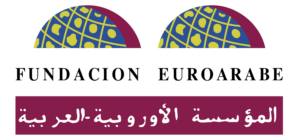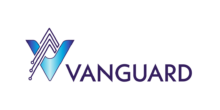Trafficking in Human Beings (THB) for
the purposes of Forced Criminality
Case study of County Lines
19 January 2025

Authors: Dr Karen Latricia Hough and Maeve Barve
Trafficking for the purposes of forced criminality is a complex crime in which victims are asked to perform either activities that are considered unlawful or antisocial, such as begging or prostitution in places where it is illegal, or those that directly constitute crimes (Villacampa & Torres, 2019)[1]. It is often linked with other forms of organised crime such as migrant smuggling, drug trafficking, extortion, money laundering, document fraud, payment card fraud, property crimes, cybercrime and other (Home Affairs, EC[2]; Aronowitz., Theuermann, & Tyurykanova, 2010)[3].
Perception bias
THB for the purposes of forced criminality is often underrepresented in the statistics, thus highlighting the need for more research on “perceptions” of the crime, since perception bias, could lead to decreased intervention, thus rendering it less visible than human trafficking for the purposes of sexual exploitation and forced labour (Fspeel.org: Aspe.gov) [4] [5] Some LEAs have a particular checklist concerning what constitutes an ideal human trafficking case (Spicer, 2019)[6] and what constitutes a typical perpetrator and victim. In addition, in terms of research there has been far more emphasis on THB for the purposes of sexual exploitation. However, in certain countries like the UK, THB for the purposes of forced criminality is a serious issue, involving the exploitation of national citizens in county lines[7].
County Lines
County Lines is a term used to describe gangs and organised criminal networks involved in exporting illegal drugs into one or more importing areas (within the UK), using dedicated mobile phone lines or other form of “deal line”. These gangs often exploit children and vulnerable adults to move [and store] the drugs and money and they will often use coercion, intimidation, violence (including sexual violence) and weapons (national crime agency, UK).[8] The victims of trafficking for the purposes of this crime are often national UK citizens. This crime is linked to gun crime and other violent weapon crime (Crime Prosecution service, 2018), and is a highly organized model involving street level drug dealing (Windle, Moyle, & Coomber, 2020)[9]. For example, often the home of a vulnerable individual is taken over in a move called “cuckooing” [10] (Moyle, 2019)[11]. This is known in common slang as a trap house.
County lines gangs are highly organised criminal networks that use sophisticated, frequently evolving techniques to groom young people and evade capture by the police (NSPCC).[12] In many cases the victim does not perceive themselves to be a victim, but rather they consider themselves to be a drug dealer, which is why the cycle of exploitation is very hard to break.
Misrepresentation
The victims of county lines are often children and vulnerable adults. However, whilst children with special educational needs, and poor mental health and children not in full-time education (Ofsted et al, 2018:8) are easy targets, perpetrators also prey on children from well off families (Ofsted, 2018)[13]. Thus, it is a misunderstanding that victims are always poorly educated, naive people, nor are they always the poorest people in the country (Rijken & Koser, 2018:6)[14]. In fact, as affluent children are less likely to be identified as ‘drug running’ by the police, perpetrators aim to groom children attending public school.
Most victims recorded in the official statistics are boys (UK government, 2022)[15]. However, females may be underrepresented in these figures, as they are less likely to arouse suspicion from law enforcement, therefore not identified as being involved in this offending statistic (NCA, 2019). Boys and young men are more likely to be groomed to sell drugs, whereas girls and young women involved in gang are more likely to be groomed for sexual exploitation. Hence is it important to understand the issue of “poly-exploitation” in which victims can be exploited for multiple purposes. The tactics of county lines mimic the marketing strategies of Ponzi schemes – multi-layered marketing which pulls people in on a false promise and incentivizes them to exploit others (CREST).[16]
ICT-facilitated THB
Traffickers are increasingly using the internet in the recruitment of victims for all forms of THB (forced labour, forced criminality and sexual exploitation) via service advertisements and gaming sites (Milivojevic, et al 2020; [17] ICAT, 2019; [18] GRETA, 2022)[19] as well as social media like Facebook, Instagram, Snapchat, TikTok, Kik, WhatsApp and Telegram. The Covid-19 pandemic has laid bare the extent to which the Internet and ICTs are now integral to a variety of activities and social interactions – and it has accelerated their relevance and usage in THB.[20]
The use of the internet is particularly instrumental in county lines, as perpetrators use social media to groom young people to both engage and recruit others. They often fake scenes of opulence and glamorize a lifestyle, by hiring Rolexes and expensive cars and take pictures of themselves drinking champagne in expensive hotels. On occasion, they blackmail their victims by using compromising images, or get them hooked on drugs, thus forcing them to accrue drug debts. Once young people have engaged with these social media accounts, the conversation will be moved onto an end-to-end encrypted messaging environment, giving the perpetrators the ability to control victims from a distance (Europol, 2020).[21]
What can we do to fight THB for the purposes of forced criminality?
There are lots of initiatives in the UK that focus on eliminating this form of exploitation, including successful police raids.[22] However, more could be done to generate knowledge about this form of THB. The Horizon Europe Vanguard (advanced technological solutions coupled with societal orientated understanding and awareness for disrupting trafficking in human beings) research project is trying to address this gap, by focusing not only on THB for the purposes of sexual and labour exploitation, but also on the poorly understood phenomenon of trafficking for the purposes of forced criminality. It aims to shed light also on the concept of poly-exploitation. Researchers are carrying out a state-of-the-art intelligence analysis reviewing current statistics and literature as well as conducting primary research including in-depth interviews with numerous stakeholders, including survivors of THB to better understand this phenomenon.
In addition, technical experts are creating serious games to sensitize at risk populations. Furthermore, awareness campaigns and a collaboration platform are being created in order to create a multi-agency response and resilience network. Researchers are also focused on creating training programs for border force and police using both traditional methods and also virtual reality. In addition, there is much focus on creating evidence-based policies, since it is imperative that all forms of THB are recognized, including their intersections. Even if county lines, occurs predominantly in the UK, it could be a model of exploitation that is replicated in other countries in the future like the USA and Ireland. THB is a heinous crime that has a devasting effect on the victims, as well as for society as a whole, posing a great security risk since almost half of Eurojust’s cases involved one or more other crimes in combination with the THB crime (EUROJUST, 2021:5).[23] There is also a strong link between county lines activity and serious violence such as knife and gun crime, the use of substances such as acid as a weapon and homicide (Home affairs, EU).[24] Hence Vanguard as a research project will be instrumental in helping to fight this crime on all levels.
[1] Villacampa, Estiarte, C. (2019). Trafficking in Human Beings for criminal exploitation from the perspective of victims and professionals. Rivista di Criminologia, Vittimologia e Sicurezza. XIII. 10.14664/rcvs/931.
[2] https://home-affairs.ec.europa.eu/policies/internal-security/organised-crime-and-human-trafficking/together-against-trafficking-human-beings_en
[3] Aronowitz, A., Theuermann, G., & Tyurykanova, E. (2010) OSCE Analysing the business model in the trafficking of human beings to better prevent the crime. Vienna. ISBN: 978-92-9234-430-6.
[4] http://fspeel.org http://www.fmreview.org/peopletrafficking
[5] https://aspe.hhs.gov/reports/human-trafficking-within-united-states-review-literature
[6] Spicer, J. (2019). ‘That’s their brand, their business’: how police officers are interpreting County Lines. Policing and Society, 29(8), 873-886.
[7] There are other forms of this crime including the exploitation of Vietnamese migrants in the cultivation of marijuana and shoplifting gangs who force people to steal or claim benefits as well as the exploitation of Roma children who are forced to beg. However, only the case study of county lines is covered in this blog due to word limitations.
[8] https://www.nationalcrimeagency.gov.uk/what-we-do/crime-threats/drug-trafficking/county-lines consulted 13/12/2023
[9] Windle, J., Moyle, L., & Coomber, R. (2020). ‘Vulnerable’ Kids Going Country: Children and Young People’s Involvement in County Lines Drug Dealing. Youth Justice, 20(1-2), 64-78. https://doi.org/10.1177/1473225420902840
[10] This is named after the practice of the cuckoo who takes over other bird´s nests to raise its young.
[11] Moyle, L. (2019). Situating Vulnerability and Exploitation in Street-Level Drug Markets: Cuckooing, Commuting, and the “County Lines” Drug Supply Model. Journal of Drug Issues, 49(4), 739-755.
[12] https://learning.nspcc.org.uk/child-abuse-and-neglect/county-lines
[13] Ofsted,et al, (2018) Protecting children from criminal exploitation, trafficking and modern slavery: an addendum. https://assets.publishing.service.gov.uk/government/uploads/system/uploads/attachment_data/file/756031/Protecting_children_from_criminal_exploitation_human_trafficking_modern_slavery_addendum_141118.pdf
[14] Rijken, Conny R.J.J. and Koster, Dagmar, A Human Rights Based Approach to Trafficking in Human Beings in Theory and Practice (May 2008). Available at SSRN: https://ssrn.com/abstract=1135108 or http://dx.doi.org/10.2139/ssrn.1135108
[15] UK government statistics. https://www.gov.uk/government/statistics/modern-slavery-national-referral-mechanism-and-duty-to-notify-statistics-uk-end-of-year-summary-2022/modern-slavery-national-referral-mechanism-and-duty-to-notify-statistics-uk-end-of-year-summary-2022.
[16] https://www.crestadvisory.com/county-lines-breaking-the-cycle
[17] Milivojevic S., Moore H., and Segrave M. (2020). Freeing the Modern Slaves, One Click at a Time: Theorising human trafficking, modern slavery, and technology. Antitrafficking review, (14), 16-32
[18] ICAT (2019) (Inter-Agency Coordination Group against Trafficking in Persons – Human trafficking and technology
[19] GRETA (2022) Online and technology facilitated trafficking in human beings. Summary and recommendations. GRETA, Council of Europe.
[20] https://rm.coe.int/online-and-technology-facilitated-trafficking-in-human-beings-summary-/1680a5e10c
[21] http://www.europol.europa.eu/media-press/newsroom/news/challenges-of-countering-human -trafficking-in-the-digital-era.pdf
[22] https://news.npcc.police.uk/releases/over-500-weapons-seized-and-1-400-vulnerable-people-safeguarded-during-crackdown-of-county-line-drug-dealers
[23] EUROJUST (2021) Report on trafficking in human beings. Best practices and issues in juridical cooperation.
[24] https://le https://home-affairs.ec.europa.eu/policies/internal-security/organised-crime-and-human-trafficking/together-against-trafficking-human-beings/eu-countries/spain_enarning.nspcc.org.uk/child-abuse-and-neglect/county-lines#skip-to-content
